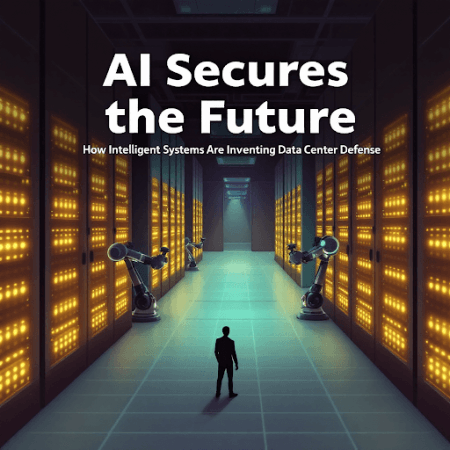
This article draws from the research of Subhash Bondhala, a cybersecurity expert and academic researcher, whose work explores emerging AI-driven defense systems in digital infrastructures.
Rethinking Cybersecurity in the Age of Intelligence
In today's high-stakes digital landscape, conventional security methods have proven too rigid to counter rapidly evolving cyber threats. Artificial intelligence (AI) is reshaping cybersecurity across data centers, offering a proactive, adaptive defense model. No longer reliant on static rules and perimeter-based barriers, security frameworks are now harnessing intelligent systems to detect subtle threats, respond in real time, and even anticipate malicious behavior before it manifests.
Behavior Over Signatures: The New Language of Detection
Modern Intrusion Detection and Prevention Systems (IDPS) powered by deep learning have moved beyond outdated signature-based models. These intelligent systems process billions of behavioral signals to identify anomalies that would otherwise slip under the radar. By creating dynamic baselines across users, devices, and networks, AI-powered behavioral analytics spot deviations in access patterns, database queries, and traffic flow dramatically improving threat detection while reducing false alarms.
Adding to this innovation is deep packet inspection enhanced by neural networks, which can assess encrypted traffic without decryption. Combined with federated learning models that share threat intelligence securely across distributed environments, organizations are now better equipped to identify and block encrypted malware communication with greater accuracy and privacy.
Trust is Never Assumed: The AI-Enhanced Zero Trust Framework
Zero Trust Architecture (ZTA) eliminates the outdated assumption that entities inside the network are inherently safe. Instead, AI systems now enable continuous authentication by monitoring behavioral biometrics like typing patterns and mouse movements ensuring real-time verification with minimal friction for users.
With access dynamically adjusted based on contextual risk, organizations experience fewer breaches while enhancing user experience. AI's role extends further to monitoring privileged access, a common vulnerability. By recognizing abnormal administrative activity patterns, these systems can prevent privilege escalation often the stepping stone for broader breaches—faster and more precisely than traditional monitoring tools.
From Alerts to Action: Automation Meets Intelligence
SOAR (Security Orchestration, Automation, and Response) platforms with machine learning are turning fragmented alerts into clear threat narratives. They map cyber kill chains in real time, enabling automated responses to halt attacks midstream. These systems detect long-term patterns and behaviors that siloed tools might miss.
AI-driven containment strategies are also reshaping breach response. By isolating compromised systems via micro-segmentation, damage is limited with minimal disruption. Automated forensic tools then reconstruct attack sequences with precision, extracting insights to strengthen future defenses. The result: faster responses, greater accuracy, and fewer breaches
Preparing for a Quantum Tomorrow: Cryptography Reinvented
As quantum computing nears practical reality, its potential to break current encryption demands urgent innovation. AI is optimizing post-quantum cryptographic algorithms based on problems resistant to quantum attacks.
From lattice-based cryptography to homomorphic encryption enabling secure computation on encrypted data, AI enhances efficiency and scalability. Neural networks help select optimal parameters, reducing computational burden without compromising security. As organizations shift to quantum-resistant models, AI ensures performance and security stay balanced across systems and networks.
A Future of Autonomous Security
Artificial intelligence is no longer an experimental feature in cybersecurity; it is the foundation of modern defense. With capabilities spanning anomaly detection, automated response, adaptive authentication, and cryptographic optimization, AI constructs a living, evolving security ecosystem. It empowers data centers to move beyond reactive strategies, instead fostering proactive environments where threats are met with agility and precision.
In conclusion, the future of cybersecurity is not just smarter, it's self-sustaining. And at the forefront of articulating this shift is Subhash Bondhala, whose research continues to illuminate how intelligent systems will secure the digital infrastructures of tomorrow.









